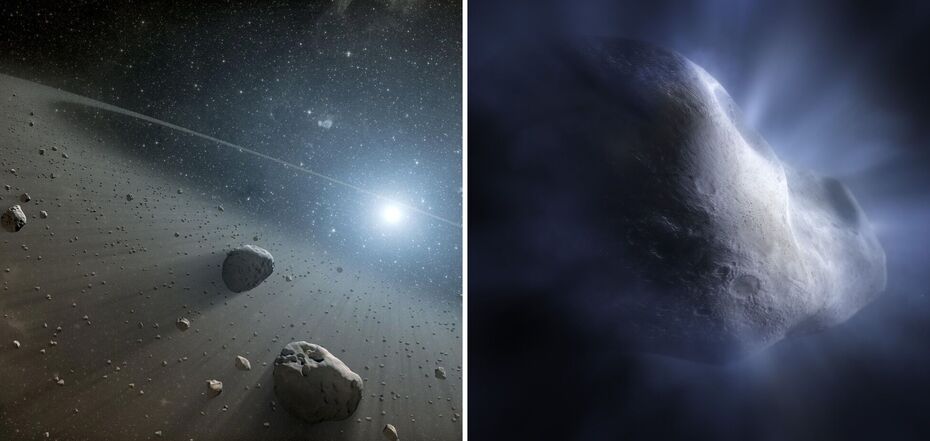Life
NASA finds water and a new secret in a rare comet in the solar system
Astronomers from NASA, thanks to the James Webb Telescope, have for the first time discovered a comet surrounded by water vapour in the main asteroid belt. It may help scientists unravel the mystery of the origin of water on Earth. However, the comet itself, called 238P/Read, creates a new mystery.
The discovery was reported in a study published in the scientific journal Nature. The peculiarity of the comet is that, unlike other comets, it somehow does not contain detectable carbon dioxide.
The water vapour around the comet was detected using the NIRSpec (Near Infrared Spectrograph) instrument, which is equipped with the James Webb Telescope. James Webb Space Telescope. When NIRSpec extracted information about the light reflected from the comet's vapour, astronomers found traces of frozen water.
Scientists suggest that the fact that the comet is located in the main asteroid belt may indicate that water ice from the primordial solar system may have been preserved in this region.
The Earth is actually a unique world in the universe, as there is nowhere else with as much water as on our planet. But despite all the scientific achievements of mankind, the mystery of the origin of water has not yet been solved.
"We don't know how all that water got here," said Stephanie Milam, Webb's deputy planetary science project leader and co-author of the study.
Comets may have been the key. And by mapping the locations of comets in the solar system, astronomers will learn where frozen matter could also be present. In addition, if humanity manages to find an explanation for the appearance of water on the planet, scientists will be able to look for star systems with similar conditions where the same water-filled planets can form.
Most known comets come from the Kuiper Belt or the Oort Cloud, located far beyond Neptune's orbit. But comet 238P/Read is one of at least three found just beyond Mars, in the main asteroid belt.
The authors of the study write that main belt comets may be important for understanding the early solar system and how the Earth got its water.
238P/Read is a special comet from the main asteroid belt. These comets periodically show a halo and a tail, just like regular comets.
Previously, it was believed that comets existed only in the outer regions of the Solar System, where their icy composition could be preserved far from the Sun. However, scientists assumed that water ice could also be preserved in the warmer asteroid belt located inside Jupiter's orbit. Evidence for this hypothesis was found thanks to the new telescope.
However, in addition to water vapour, comet 238P/Read surprised scientists with the absence of carbon dioxide, which usually makes up about 10% of the volatile matter in comets that evaporates under the influence of heat. Scientists suggest two explanations. According to one, the comet had carbon dioxide during its formation, but later lost it due to high temperatures.
Scientists also do not exclude that the comet could have formed in a particularly warm pocket of the Solar System, where carbon dioxide was simply absent.
Next, the scientists intend to investigate other comets in the main asteroid belt in more detail, both for ice and the presence of carbon dioxide.
Earlier, OBOZREVATEL also reported that the James Webb Telescope made it possible to. The James Webb telescope allowed scientists to see a planet with a glowing atmosphere, which confused and surprised them.
Subscribe to OBOZREVATEL's Telegram and Viber channels to keep up with the latest news.



























